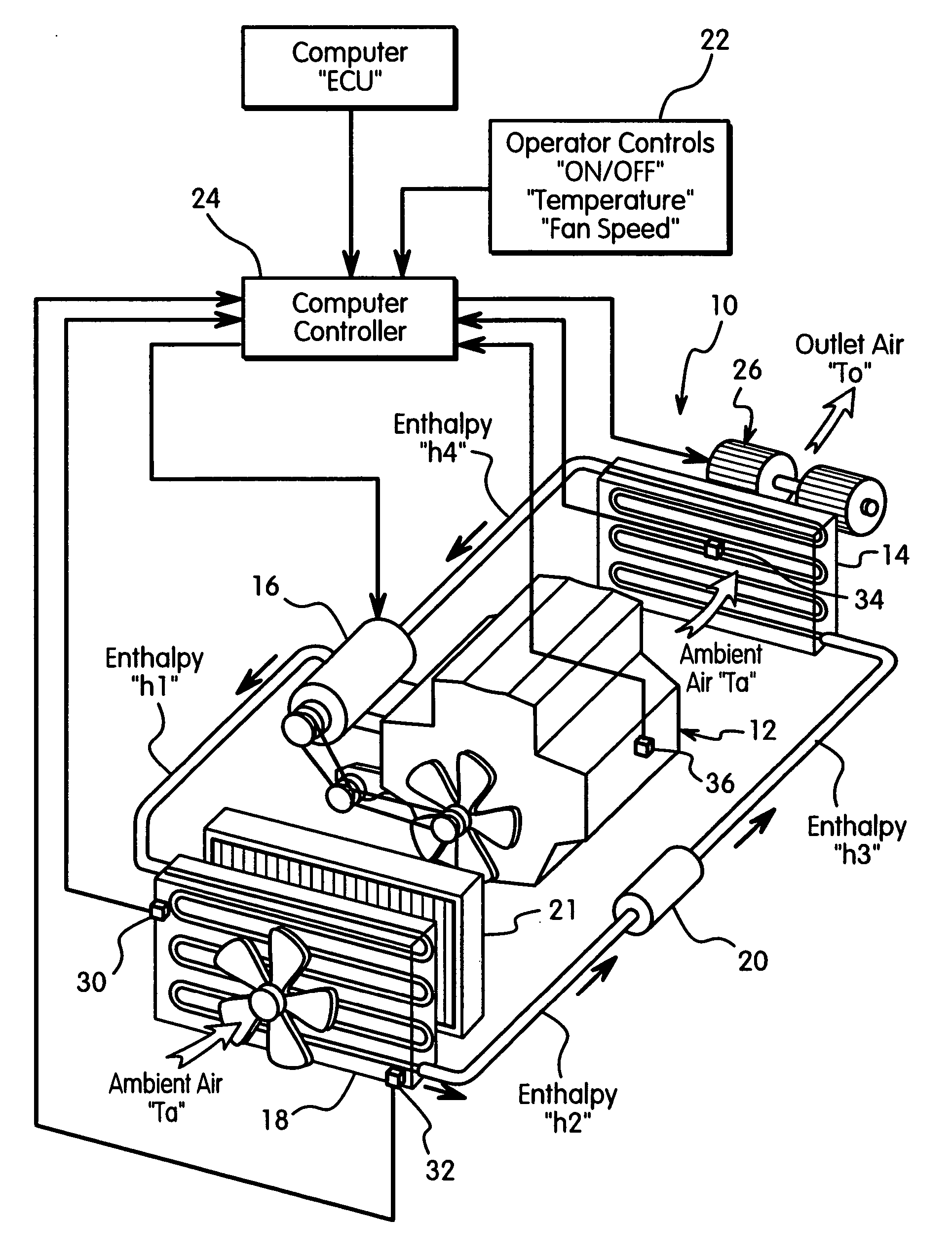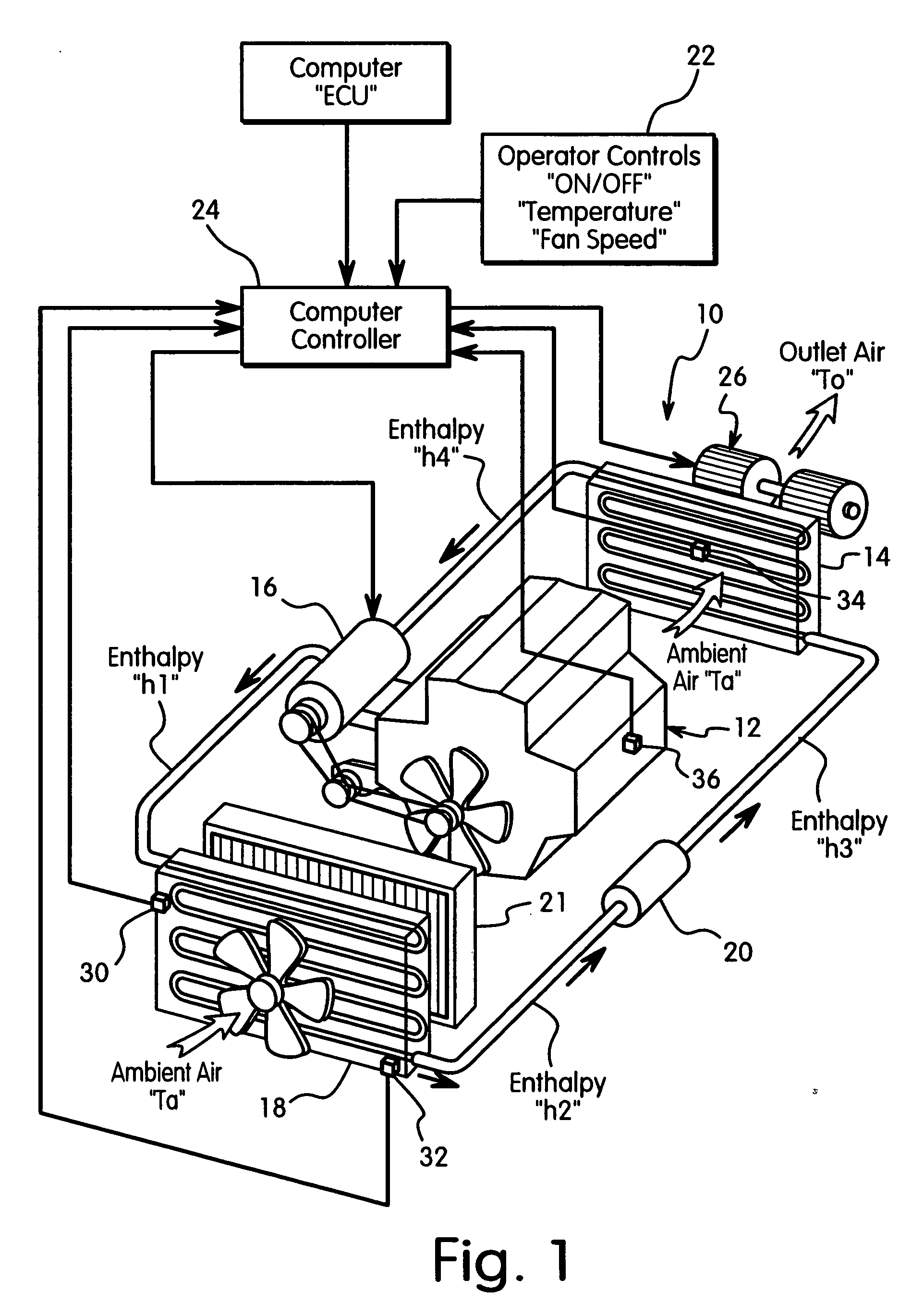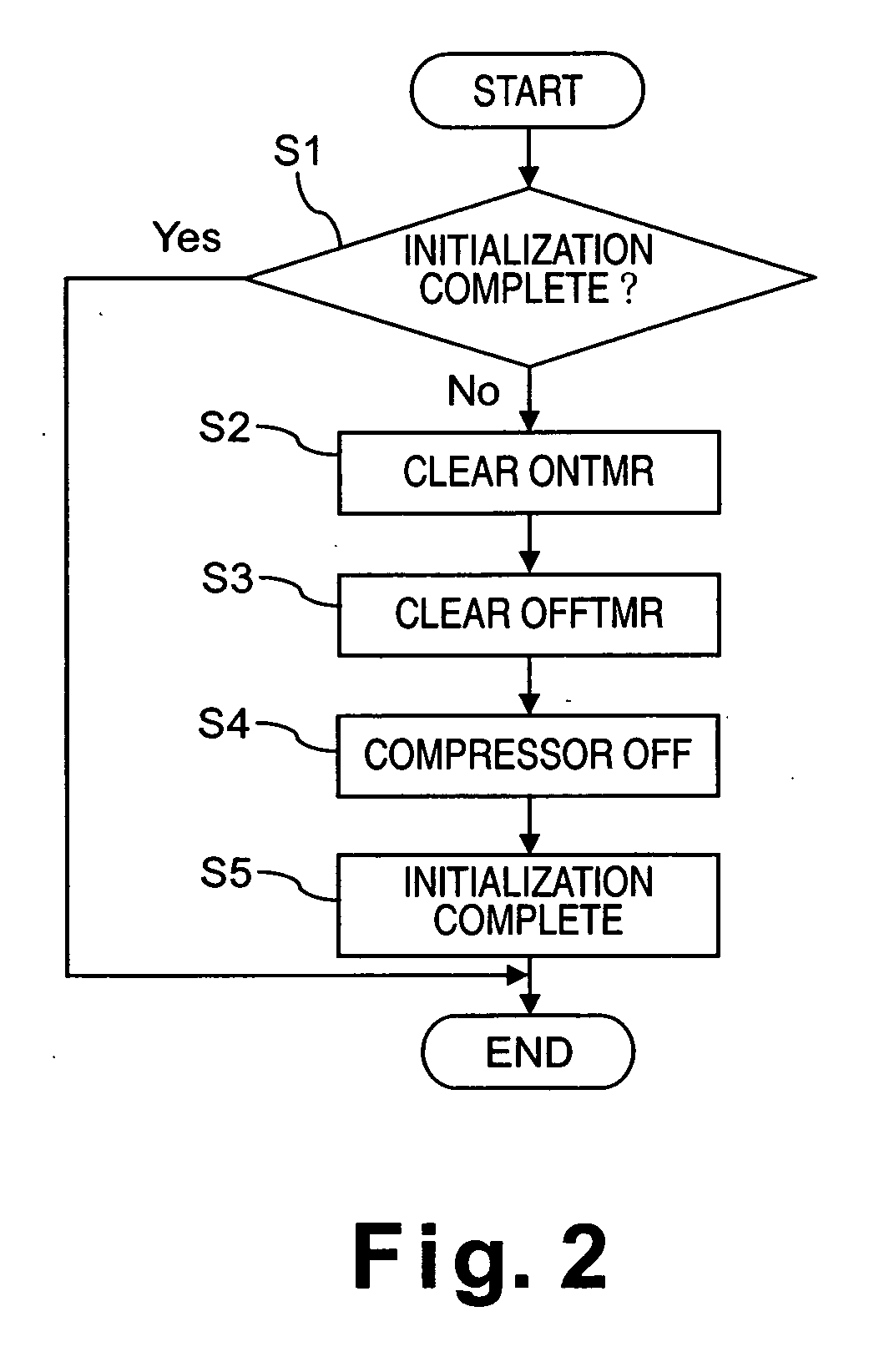Air conditioner control logic for compressor noise and torque management
a technology of compressor noise and torque management, applied in the field of air conditioner control system, can solve the problems of affecting the performance of the vehicle, the noise and vibration of the compressor, and so as to reduce the torque requirement of the compressor, reduce the noise of the compressor, and facilitate the operation at start-up.
- Summary
- Abstract
- Description
- Claims
- Application Information
AI Technical Summary
Benefits of technology
Problems solved by technology
Method used
Image
Examples
first embodiment
[0020] Referring initially to FIG. 1, an air conditioner 10 is illustrated in accordance with the present invention. The air conditioner 10 according to the present invention is particularly suitable for an automobile or other passenger vehicle (such as but not limited to a car, an SUV, a minivan, a station wagon, a pick-up truck, etc.,) as well as refrigeration systems for homes and industrial use. In the illustrated embodiment, the air conditioner 10 is driven by a vehicle engine 12 in a conventional manner. Basically, the air conditioner 10 has a refrigerant circuit that includes an evaporator 14, a compressor 16 with an electromagnetic clutch, a condenser 18 and an expansion valve or orifice 20. Typically, the condenser 18 is located in front of a radiator 21 that cools the engine coolant of the engine 12. These components 14, 16, 18 and 20 are conventional components that are well known in the air conditioning field. Since these components 14, 16, 18 and 20 are well known in th...
second embodiment
[0070] Now referring to FIGS. 6 and 7, a one time pulsing logic in accordance with the present invention will now be discussed. The control logic illustrated in FIGS. 6 and 7 are utilized separately from the prior full time pulsing logic. The control logic of FIGS. 6 and 7 is directed to minimize the noise due to slugging and / or manage the torque load on the engine due to the liquid refrigerant in the compressor 16. Thus, after, the initial pulsing or cycling of the compressor 16, the air conditioner 10 is operated according to the normal control logic of FIG. 4.
[0071] Referring initially to the initialization logic of FIG. 6, basically, the initialization control logic of FIG. 6 is identical to the initialization control logic of FIG. 2, except that additional steps have been added such that pulsing of the compressor 16 between ON and OFF operating states only occurs when the engine 12 is cold and when there is a possibility of liquid refrigerant accumulating in the compressor 16. ...
PUM
 Login to View More
Login to View More Abstract
Description
Claims
Application Information
 Login to View More
Login to View More - R&D
- Intellectual Property
- Life Sciences
- Materials
- Tech Scout
- Unparalleled Data Quality
- Higher Quality Content
- 60% Fewer Hallucinations
Browse by: Latest US Patents, China's latest patents, Technical Efficacy Thesaurus, Application Domain, Technology Topic, Popular Technical Reports.
© 2025 PatSnap. All rights reserved.Legal|Privacy policy|Modern Slavery Act Transparency Statement|Sitemap|About US| Contact US: help@patsnap.com



